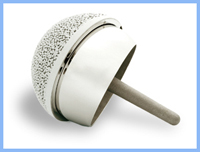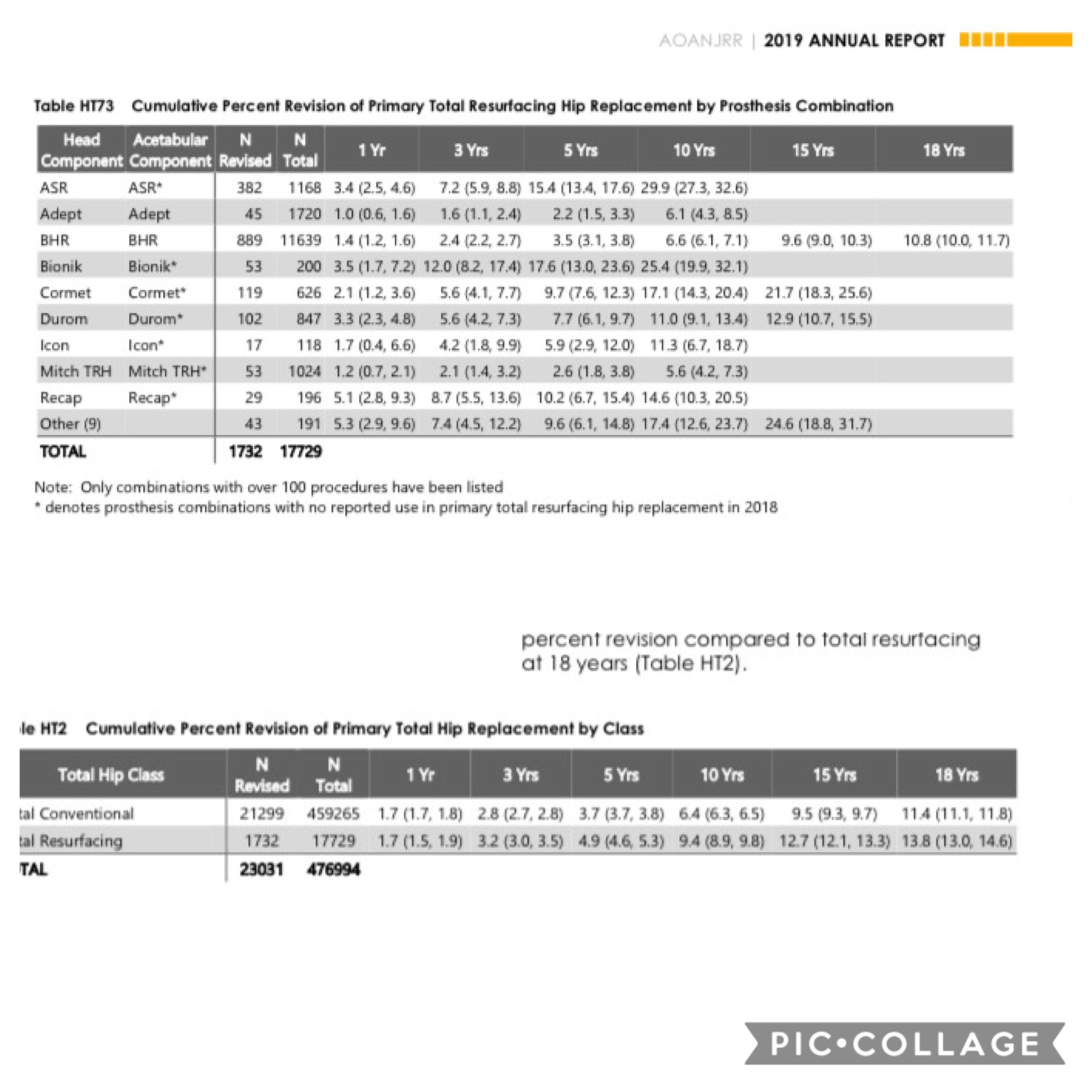Hip Resurfacing Arthroplasty

Hip resurfacing is a bone preserving joint replacment used for the management of established osteoarthritis, particularly in young high activity demand patients. Resurfacing is impact and wear resistant with a low dislocation rate, making it suitable for patients who want to return to a variety of sporting activities.
Hip Resurfacing is currently only available in a Metal on Metal (MoM) articulation. As apposed to the conventional hip replacement which is available in a few combinations. Namely - Plastic on Metal (PoM), Plastic on Ceramic (PoC) and Ceramic on Ceramic (CoC)
Resurfacing has received unfair criticism in the last decade due to the unusually high failure rate when compared to conventional hip replacement. This failure rate has been attributed to the shedding of metal ions from metal rubbing on metal and the metal ions causing high Chrome and Cobolt levels in blood. At present the literature is not clear at what blood levels are these ions toxic and what are the clinical manifestations of toxic blood levels. https://www.drugwatch.com/hip-replacement/metallosis/
In 2007 a particular type of resurfacing was singled out as having a higher than usual failure rate by the Australian Joint Registry. This prosthesis was subsequently recalled from the market in 2009 after TGA intervened.
https://www.tga.gov.au/behind-news/recall-depuy-orthopaedics-asr-hip-replacement-device
Below is a graph published as an yearly report on all joint replacements done in australia. BHR (Birmingham Hip Resurfacing) at 18yrs has implant survivorship slightly better than conventional THR 10.8% vs 11.4%.
A/Prof Hazratwala has always used BHR resurfacing implants and continues to do so today.
Besides some poor implant design 2 other very important factors in the success of resurfacing arthroplasty are 1. Patient Selection and 2, Implant position.
Patient Selection
Resurfacing works best in large individuals with good bone. Therefore the recommendation is to reserve this arthroplasty for young males with femoral neck size larger than 50mm https://www.tga.gov.au/alert/birmingham-hip-resurfacing-system
Implant Position
Edge loading has been indicated as a reason for rapid metalosis and implant failure. If the implants are mal positioned such that the articulating surfaces are not concentric, the metal will edge load on metal and wear quickly releasing Chrome and Cobolt ions.
For the above reasons A/Prof Hazratwala is very particular with his patient selection for this procedure and has an exhaustive pre operative work up to plan the correct implant position and uses image derived instrumentation and computer navigation during the operation to execute the plan precisely and accurately https://www.ncbi.nlm.nih.gov/pubmed/18676942
Attached below is a Video demonstrating A/Prof Hazratwala's surgical technique
Sub-Menu
- Adult Total Hip Replacements
- Hip Resurfacing Arthroplasty
- Adult Total Knee Replacements
- Adult Revision Hip And Knee Replacements
- Unicompartmental Knee Replacement
- Anterior Cruciate Ligament Reconstruction
- Ankle Reconstruction
- Foot Disorders
- HTO (High Tibial Osteotomy)
- Lower Limb Trauma
- OATS (Osteochondral Autologous Transplantation Surgery)
- Trochanteric Bursitis Surgery
- Knee Arthroscopy
- Surgery for Patella Instability
- Bone Tendon Bone Allograft ACL Reconstruction
